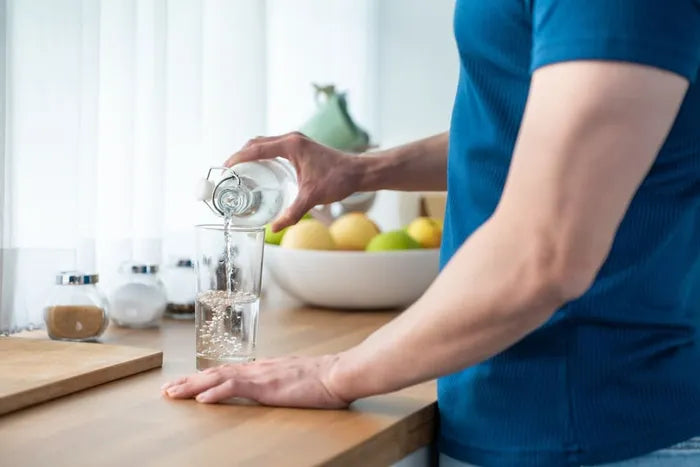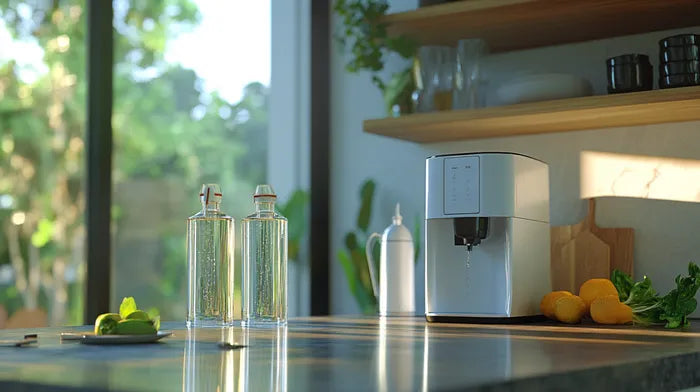Aeration - on a chemical level.

In order to explore the science behind Mayu Water, we will refer to two key premises.
1 - Biomimicry is the concept that the earth's natural mechanisms provide the most efficient and elegant methods for life to thrive. In other words, emulating nature's intelligence will provide optimal results.
2 - The human angle - body and soul.
Life cannot exist without water, that is a universal and basic law of nature. The importance of hydration cannot be overstated.
Aeration - on a chemical level.
Atmospheric Oxygen - In; CO2 - Out.
What is Aeration? Aeration is the process of bringing water and air into close contact. Aeration influences the water’s physical and chemical characteristics as well as taste, odor, texture, and overall quality.
A flowing motion rejuvenates the water, allows it to absorb atmospheric oxygen, and gives the water its native living structure.
How does it work?
The swirling motion introduces atmospheric air into the water, allowing fresh oxygen to dissolve within it. The interface of water and air, expanded by the vortex motion, allows for increased gas exchange and air circulation, causing volatile compounds to release from the water and fresh oxygen to diffuse in.
Fresh oxygen is vital to the quality of water.
The benefits of aeration have been verified by the World Health Organization and other prominent institutions.
The swirling motion A transfer between gas and water takes place as we affect the surface and bring in oxygen. Simultaneously, undesirable compounds are released and evaporate. CO2 embedded in the water, for example, evaporates — and through this process, pH levels in the water are elevated.
How exactly does this happen?
- the swirling motion causes the aqueous CO2 (carbon dioxide) to become gas CO2 and leaves the water: CO2 (aq)->CO2 (gas)
- Carbonic acid (H2CO3) in the water then creates CO2 according to this reaction: H2CO3 ->CO2 + H2O
- Bicarbonate (HCO3–) in the water creates carbonic acid (H2CO3) according to this: HCO3– + H+->H2CO3
The net result: H+ (an acid) is consumed, and pH levels go up.
The swirling aeration process helps evaporate and remove dissolved toxic gases and volatile organic compounds (VOC) such as radon, carbon dioxide, hydrogen sulfide, nitrogen trichloride, trihalomethanes, trichloroethylene, dichloroethylene, chlorine, ammonia, methane, volatile organics (MTBE, PCE, TCE, toluene, and other industrial solvents). These substances are all considered hazardous materials and potentially dangerous when consumed in excess.
It’s important to emphasize that the Mayu Swirl does NOT filter or purify drinking water. We highly recommend using a good filter to make sure you start with pure H2O.
3 - Taste - Aerated water tastes and feels better.
The chemical and natural processes described above bring the water to its optimized neutral state — that is, pH balanced, rejuvenated, and revitalized. In a double-blind taste test, 87% of subjects in our experiment perceived a clear, unmistakably improved, and almost sweet taste when compared to non-aerated water. (Interestingly, child samplers were particularly perceptive to the differences in water quality.)
Other studies have confirmed that swirled water is indeed sweeter and more delicious. Aeration balances the water’s pH level, quantifiably improving its taste, odor, and overall quality.










































